
News Center
Jansen’s Story
- By Suzanne and Brent Jones
- Posted in Patient & Family Stories
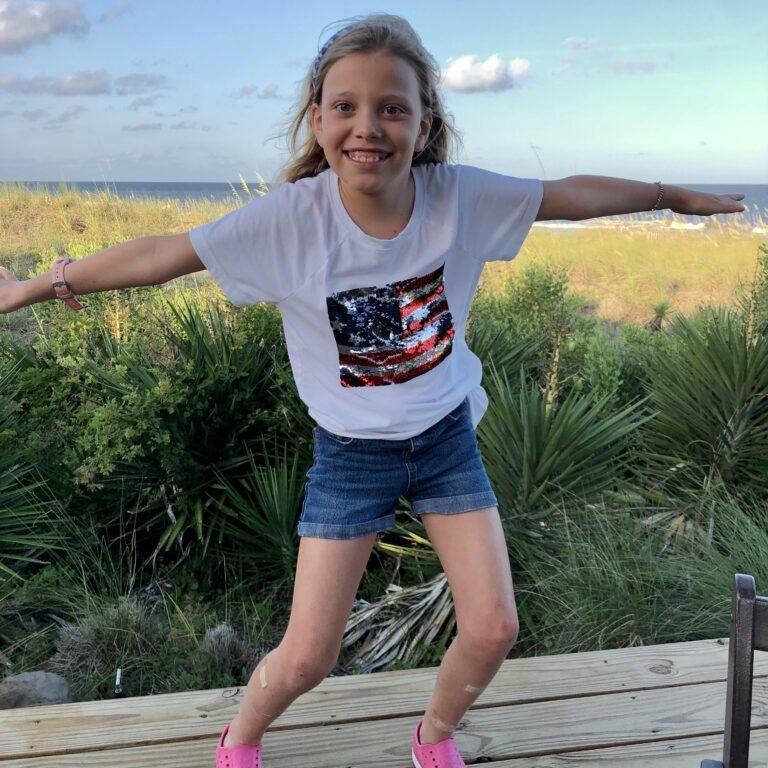
A Rare Disease Day Interview of One Family’s Journey
Edited by Kyle W. Davis, CGC and Marimac Moore
In honor of Rare Disease Day 2022, we want to introduce you to Jansen. For 10 years, Jansen was a girl in search of a diagnosis for her puzzling neurological and developmental symptoms. After her diagnosis, we were lucky enough to interview Suzanne and Brent to get an inside look at this little “Syngapian” – someone diagnosed with SYNGAP1-related non-syndromic intellectual disability (a neurodevelopmental disorder commonly referred to by the gene name, “SYNGAP1”) – and her family’s struggle to find a diagnosis, what that diagnosis meant, and where it has taken them.
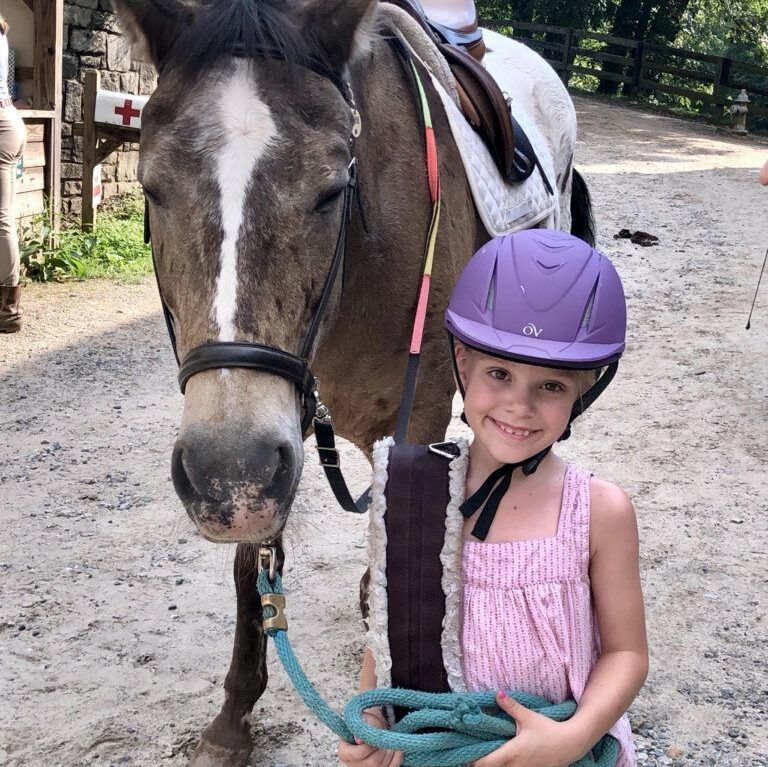
Tell us about Jansen these days. What are her favorite activities, foods, games, toys?
Jansen adores all animals, especially horses whom she rides therapeutically. Swimming and playing special needs (“buddy”) baseball are also favored activities. Jansen plays with an extensive collection of Paw Patrol figures and vehicles, listens year-round to Christmas tunes, and is an enthusiastic Lego builder. Like many Syngapians, Jansen is particular about her food variety – not much is a continuing staple other than avocado. Trying to get Jansen to eat at least two decent daily meals is a challenging dance in which we’re pushing for caloric intake while also trying to mask epilepsy medications hidden in her meal (often without success).
What kinds of family activities does she enjoy?
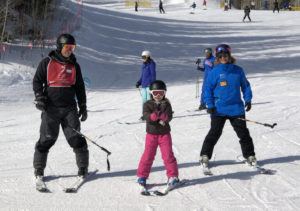
Jansen’s favorite family activity is snow skiing. She is an adrenaline junkie – the faster, the better! We have traveled to Park City, Utah for a long weekend the past few years. Jansen partners with an instructor from the National Ability Center (NAC) who helps her with adaptive skiing, and she loves it!
We could not enjoy a family ski vacation without the support of the NAC (or other similar entities). Another family tradition we have initiated is a horseback ride either around Jansen’s birthday in October or on a family vacation. Since Jansen relishes being in the saddle, we have made a conscious effort to ride with her. It is truly wondrous to engage in a sport Jansen is better at than the rest of us!
When did you two first notice differences in her development? What was it like in those early days?
Jansen was, by all appearances, a typical baby, although she appeared to feed often without gaining weight during her first month of life. She never stood or bounced on our laps like many infants. When Jansen was 5 months of age, she was assessed and diagnosed with global developmental delay, hypotonia (low muscle tone), and an inability to bear weight. These diagnoses caught us off guard, but we found solace in the assurance that many typical infants reach milestones in their own time.
We felt somewhat desperate, with no one to turn to for answers, and zero idea how to best support our youngest child.
Managing Jansen’s therapies while also raising two boys who were two and four years older than she was not easy, but we understood that extensive therapy should allow Jansen to catch up to her peers. We registered Jansen in special needs programs at preschools and struggled to grasp what she was facing. We felt somewhat desperate, with no one to turn to for answers, and zero idea how to best support our youngest child. When Jansen was three, we met with another round of doctors and first submitted her DNA to be used for a few genetic tests, including whole exome sequencing. Results were inconclusive.
As time passed, we felt increasingly isolated from families with typical children, discouraged by a lack of answers, and concerned about the illusive cause of our daughter’s maladies that seemed to progress. When Jansen was five, we noticed infrequent and fleeting staring episodes. She was diagnosed with absence epilepsy shortly thereafter. Around age seven, Jansen’s height and weight trajectory declined noticeably. Since then, it has plummeted with no medical explanation as to why. Over the years, we traveled to specialists around the country seeking answers to no avail. It has been a long road.
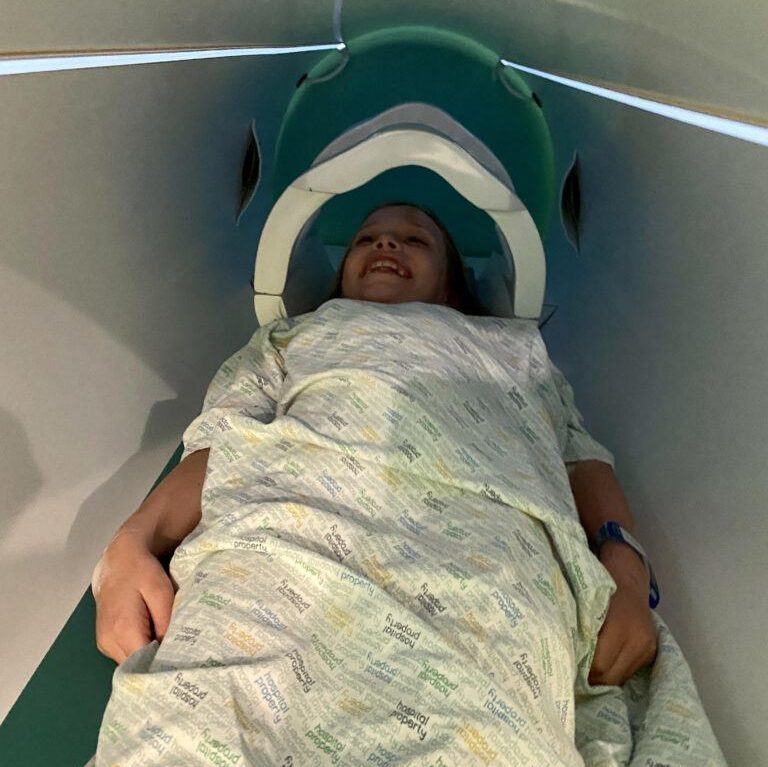
Throughout Jansen’s medical and diagnostic journey, what have been some of the biggest challenges Jansen has faced?
One of the biggest challenges we’ve all faced is the ongoing medical focus required of Jansen’s life. She has been poked and prodded endlessly and has had to ingest a variety of medicinal supplements and seizure medications for years, which is both distasteful and unending. Jansen is most challenged by an inability to communicate her thoughts, feelings, and emotions well due to a severe expressive and receptive language disorder. She quietly and calmly submits to blood draws, EEGs, MRIs, and other procedures without understanding why she is being subjected to such unpleasantries. It’s heartbreaking to witness and exhausting to manage. Fortunately, Jansen loves doctors and is eager to be the center of attention!
There were 20+ negative genetic tests for Jansen over the years. Was there ever a time when you wanted to give up the search for a genetic diagnosis? Were you ever encouraged to stop?
Working to ascertain the underlying cause of Jansen’s various disabilities may be likened to an ongoing roller coaster ride accompanied by anxiety, frustration, and isolation. When Jansen was younger, we searched endlessly, visiting renowned specialists around the country, and even applied to the NIH’s Undiagnosed Diseases Network for acceptance. Our efforts culminated in no diagnosis and rejection by the NIH’s program. It was crushing. At that time, we were advised by a number of specialists to stop seeking answers to the question of what ailed our daughter and focus on enriching her day-to-day existence. To be quite frank, this advice offended us.
How could anyone suggest that we stop doing everything in our power for discovery? Could these doctors not see that we were quite capable of managing Jansen’s care in tandem with searching for a diagnosis? Sure, we were tired and juggling more than many, but disinterested physicians spending a few minutes of their day evaluating our precious little girl clearly had little concept of the depths of our desire for an analytically believable reason for our daughter’s differences. We understood that doctors advising us to discontinue searching for a genetic cause were well-meaning, but we simply believed, and continue to feel, that they were wrong.
After so many negative tests, what were your feelings around Whole Genome Sequencing before doing the testing?
In the almost eight years since Jansen’s initial whole exome sequencing test, we have been repeatedly advised that no other form of testing would provide us with any sort of revelation. Accordingly, while not giving up on answers, we focused on addressing Jansen’s continually growing litany of medical ailments. Jansen’s exome was reevaluated twice, but no findings were exposed. While disappointed, we did recognize that both neurology and genetics are extremely complex and evolving fields of study.
The fact that we seemed to have a diagnosis was mind blowing. Could this be true?
Remaining mindful that Jansen’s doctors felt a diagnosis was not in our plan, particularly until genetic breakthroughs advanced, we could not shake the feeling that we were all missing something. We also became increasingly concerned that Jansen seemed to be declining. As she approached 11, Jansen’s multi-year lack of advancement in terms of acquiring academic skills and stature was alarming. We contacted Jansen’s geneticist beseeching her to further brainstorm on Jansen’s puzzling medical situation. Left with little to offer, she advised that our only course of action would be to submit Jansen’s DNA for whole genome sequencing. But, she made it clear that the likelihood of discovery, given the extensive genetic testing Jansen had already undergone, was about 7%. The statistic stuck in our minds for the months we awaited genome results, but we would not pass up this tiny nugget of hope being offered.
What was it like when you and your family learned of Jansen’s results?
In September 2021, we received a call from our geneticist’s office advising that Jansen’s whole genome analysis results were in. I will not soon forget sitting in Jansen’s speech therapist’s waiting room and opening the email from our genetic counselor stating she thought I’d be excited to hear that the genome was positive for a finding in a gene called SYNGAP1. I froze – then quickly started googling SYNGAP1. The phenotype for a patient with SYNGAP1 fit Jansen to a T.
The fact that we seemed to have a diagnosis was mind blowing. Could this be true? I texted my husband, Brent, asking what he thought about Jansen and SYNGAP1. We were both drinking in information on the internet as quickly as possible, while also texting and calling each other with astonishing findings about SYNGAP1. Brent cried tears of relief as he drove home from work, reeling from reading about the alignment of SYNGAP1 symptoms with Jansen’s. I felt like I was going to burst with excitement while heading home from Jansen’s therapy. Finally, something made sense. We spent the evening celebrating Brent’s 47th birthday at a restaurant while sneaking peeks at our phones to learn more about SYNGAP1. What a discovery.
How has this diagnosis changed Jansen’s treatment/management, if at all? Has it changed your or her day-to-day since receiving a diagnosis?
Variantyx’s diagnosis is the final piece to a puzzle we’ve been missing for years. The disorder caused by changes to SYNGAP1 are due to de novo (not inherited) single-gene mutations of one of two copies of the gene located in Chromosome 6. With only one “working” SYNGAP1 gene, patients’ bodies can create only ~50% of the critical SynGAP protein, which acts as a regulator in the brain’s synapses. This protein deficit keeps the neurons from properly communicating with each other, critically impairing learning and memory, as well as causing the other debilitating characteristics of SYNGAP1.
It has been confirming to discover that each of the nine specialties that we consulted as Jansen’s symptoms have evolved are exactly those who Syngapians often need on their medical team. Our newfound clarity is relieving and allows us to consider Jansen’s treatment more strategically. We have not altered Jansen’s current treatment, but have scheduled a comprehensive assessment of her neurological function. We are also weighing what may be the most effective blend of academics, therapies, and neurological intervention going forward. While Jansen’s daily life remains the same as pre-diagnosis, ours has changed dramatically.
Can you speak to the community you have found through advocacy groups or connections with other families through this process?
Brent found a podcast, SynGAP10 with Mike Graglia, and recommended it to me. This weekly download in 10 minutes of what’s happening in the SynGAP world is priceless. Within weeks, we were on calls with the SynGAP Research Fund’s (SRF) founder and Managing Director, Mike Graglia. Joining the SRF community comprised of driven parents all searching for heightened understanding of SYNGAP1 and methods to treat or cure it has given us purpose. Knowing exactly what ails our daughter, and understanding the long road to a cure, may be daunting, but it also allows us hope. With hope comes the dream of a cure.
Within weeks of Jansen’s diagnosis, we launched a fundraiser supporting SRF’s research into therapeutic drugs being vetted to be repurposed for SynGAP patients. In doing so, we spread awareness of SYNGAP1 to more than 400 families and generated meaningful funds to support research. Since Jansen’s diagnosis and our initial fundraiser, we have begun planning a local SRF fundraising event to be held in late 2022. Once again, our purpose is to raise awareness of SYNGAP1 and funds for research. Various methods of drug and gene therapies are in the queue to be taken from bench to bedside for SYNGAP1 patients. Because of Variantyx, Jansen is now in line for one of those metaphorical patient beds awaiting a cure.
In addition to basking in our newfound hope and indulging our desire to absorb SYNGAP1 knowledge, Brent and I have embraced SRF’s SynGAP community. We have connected with a wide variety of parents and family members similarly affected by SYNGAP1. While Brent prioritizes Mike Graglia’s SynGAP10 weekly podcast, zoom calls, webinars, and meetings all tied to SynGAP are now part of my daily routine.
Since the diagnosis you’ve been nominated to join the Board of the SRF. What is the goal of the SRF and what drives your involvement?
Completely parent led, SRF is the largest non-governmental funder of SynGAP research whose purpose is to improve the quality of life of SYNGAP1 patients through drug treatments, gene therapies, and support systems. Cutting edge research is changing the SYNGAP1 landscape. The expression of SynGAP protein may be increased by drug therapies under evaluation, allowing for improved neural function. Breakthrough gene therapies are also being vetted that could result in the gene mutation being altered or remedied. Our family heartily supports this research and is now intimately involved with SRF – so much so that I hope to be voted onto SRF’s Board of Directors in April. Brent and I feel a sense of urgency to better understand SYNGAP1, partner with SRF in its efforts to back research into treatments or a cure, and generate funds to support such initiatives.
How has your connection with the SRF impacted Jansen and your family?
Our connection with SRF has allowed us to narrow our attention and focus our energies on SYNGAP1 – a tremendous improvement over feeling ignorant, helpless, and alone. Discovering the underlying diagnosis of Jansen’s medical condition has been invaluable. Leaning on a community of other SYNGAP1 families through SRF has been an added and welcome comfort.
Do you have any advice or words of wisdom you would share with individuals and families that are still on their journey to a genetic diagnosis?
When reflecting on our journey, the best advice we have for other families is to believe in your intuition. Advocate, question, and search for answers. Years passed as we managed daily living and raising a family, but we continued to want clarity. While we did not connect the dots (Variantyx did!), we did keep pursuing the truth.
The best advice we have for other families is to believe in your intuition.
Parents are their children’s greatest champions. We certainly worried about the cost of genetic testing as a barrier to discovery because it’s incredibly expensive. But we have learned that genetics labs are willing to work with families to provide revolutionary diagnostics at manageable pricing.
We hope that others will consider genetic testing (the only means to identify disorders like SYNGAP1) if it could bring clarity and not forgo the opportunity based on cost alone.
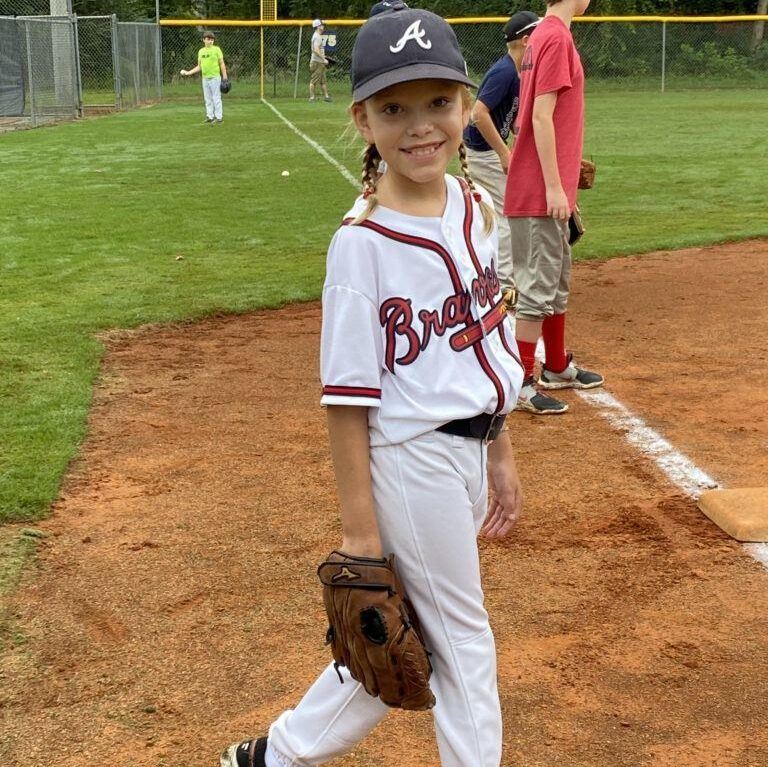
Having been through such a journey, what do you wish people could know about Jansen and her journey so far?
Despite our struggles, Jansen is our cherished daughter and has brought us much joy and laughter. We understand now that Jansen’s condition is not regressive. She will continue to learn and develop – just at her own pace. We can’t predict Jansen’s future, but will continue doing our part to provide her with the happiest and most successful life we can. We see the very real possibility of a CURE. Science and technology have never before seen such a rapid period of innovation – we are all in. We have long-awaited answers and a better picture of what Jansen’s facing. A 10-year odyssey…20+ genetic tests…one life-changing diagnosis by Variantyx. This knowledge brings us both power and peace.
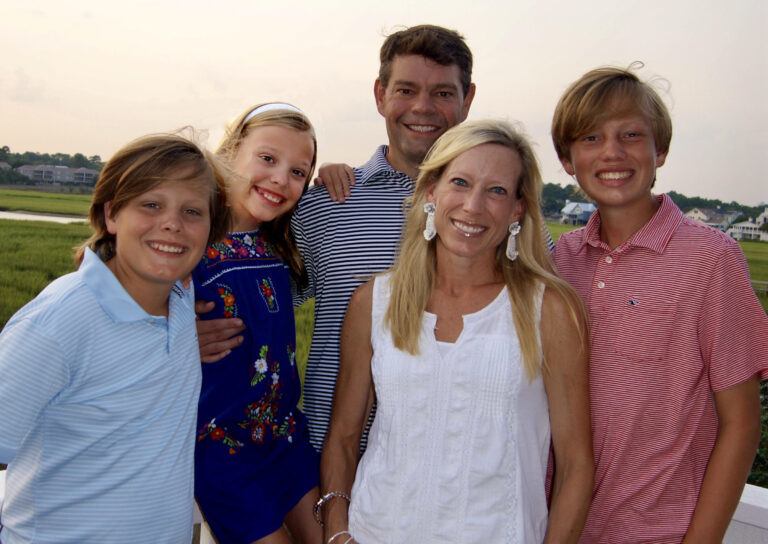
To learn more about Jansen’s story, SYNGAP1-related non-syndromic intellectual disability and the SYNGAP1 Research Fund:
- Read our Case Study
- SynGAP Research Fund
- Suzanne and Brent’s quest to raise awareness about SYNGAP1 and research funds to develop treatments for people with SYNGAP1-related neurodevelopmental disorder.
- Information from the National Organization for Rare Disorders (NORD) about SYNGAP1-related nonsyndromic intellectual disability
- Jansen’s Wednesday Warrior profile on the SRF website
Note: This interview transcript has been condensed and edited for length and readability.